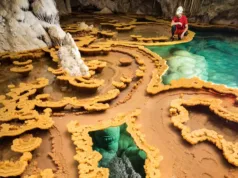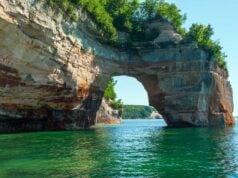Skull Rock is a unique geological formation that has captivated the imagination of people around the world due to its striking resemblance to a human skull. This natural wonder has garnered significant interest and is often a popular tourist attraction in the regions where it can be found.
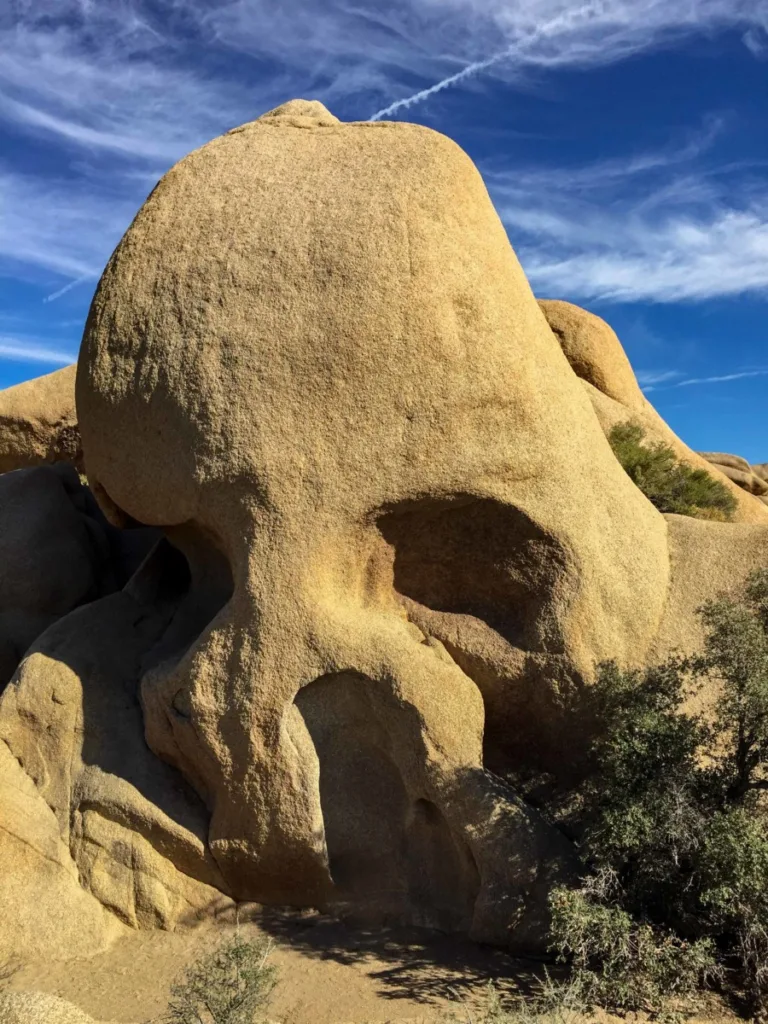
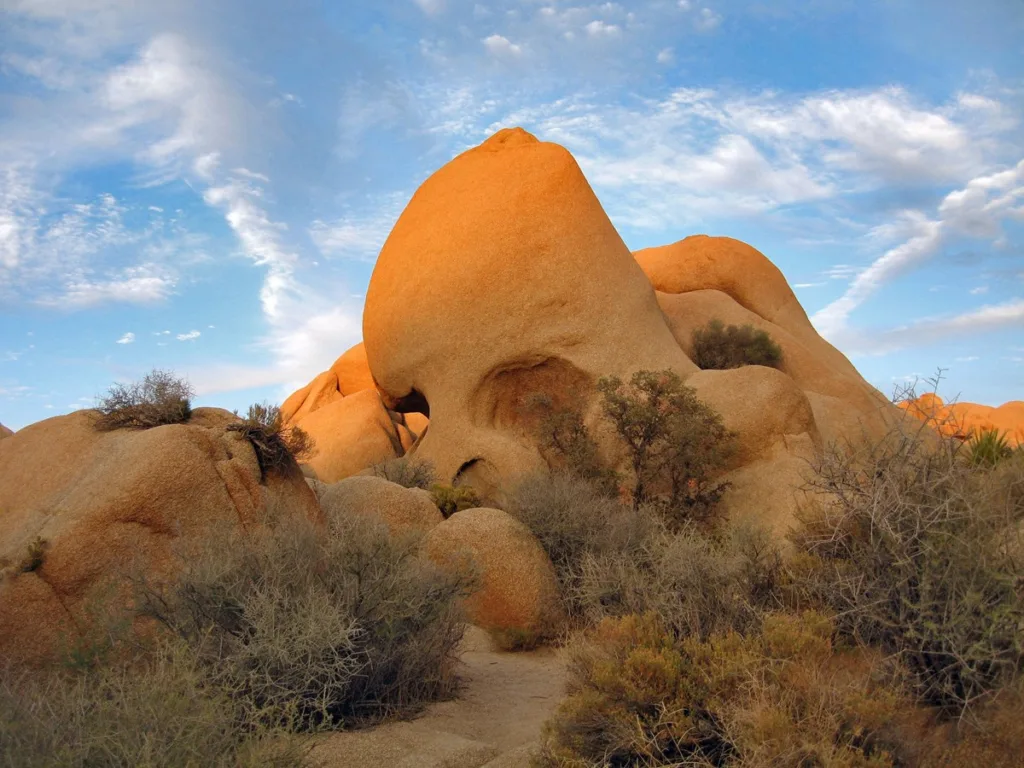
Definition of Skull Rock: Skull Rock is a naturally occurring rock or rock formation that, when viewed from a certain angle, closely resembles the shape of a human skull. The resemblance is usually attributed to erosion, weathering, or other geological processes that have sculpted the rock into this distinctive shape. The formation often includes eye sockets, a nose, and a mouth-like opening, contributing to its skull-like appearance. While not actual human skulls, these rock formations have evoked fascination and intrigue for their uncanny resemblance to the iconic symbol of mortality.
Geographic Locations of Skull Rocks: Skull Rocks can be found in various parts of the world, and each one is a unique natural wonder. Some of the notable locations where Skull Rocks can be found include:
- Joshua Tree National Park, USA: One of the most famous Skull Rocks is located in Joshua Tree National Park in California. This striking formation is a popular attraction for visitors to the park, which is known for its unique desert landscapes.
- Australia: There are Skull Rocks in different parts of Australia, particularly in remote and arid regions. These formations add to the country’s diverse geological features.
- Madagascar: The island nation of Madagascar also boasts its own Skull Rock formations, attracting travelers interested in its distinct biodiversity and geography.
- Other Regions: Skull Rocks can be found in various other places, each with its own unique geological history and local significance.
Significance and Interest in Skull Rock: The significance and interest in Skull Rock lie in its combination of natural beauty, unique geological processes, and the human fascination with pareidolia—the tendency to perceive familiar shapes, such as faces, in random patterns. Here’s why Skull Rocks generate interest:
- Aesthetic Appeal: Skull Rocks often stand out in their natural surroundings due to their unusual and striking appearance. Their skull-like features can be eerie, beautiful, or even whimsical, depending on one’s perspective.
- Geological Wonder: The formation of Skull Rocks showcases the power of erosion and weathering in shaping the Earth’s landscapes. Studying these formations provides insights into geological processes.
- Cultural and Tourist Attraction: Many Skull Rocks have become cultural icons and tourist attractions. They draw visitors and photographers who are intrigued by the unique shapes and often surrounding legends or stories associated with them.
- Symbolism: Skulls have various cultural and symbolic meanings across different societies. Some may associate Skull Rocks with themes of mortality, while others may see them as symbols of adventure and exploration.
In conclusion, Skull Rocks are natural wonders that captivate the imagination due to their resemblance to human skulls. These unique geological formations can be found in various locations worldwide, and their significance lies in their aesthetic appeal, geological interest, cultural significance, and their ability to evoke fascination and intrigue in those who encounter them.
Natural Formation of Skull Rock

The natural formation of Skull Rock is the result of geological processes, primarily erosion and weathering, which have shaped certain rock formations into skull-like features. These processes occur over long periods of time and are influenced by various environmental factors. Here, we’ll delve into the geological processes behind the creation of Skull Rock formations and discuss their characteristics.
Geological Processes: a. Erosion: Erosion is the gradual wearing away of rock surfaces by external forces such as wind, water, ice, and even chemical reactions. Over time, these forces can remove layers of rock and expose underlying layers with different properties.b. Weathering: Weathering refers to the breakdown of rocks into smaller particles through chemical, physical, or biological processes. This can include processes like freeze-thaw cycles, chemical reactions, or the growth of plant roots that crack and break apart rocks.c. Differential Erosion: Not all parts of a rock formation erode at the same rate. Some areas may be more resistant to erosion due to differences in rock composition, hardness, or structural features. This differential erosion can lead to the development of distinct shapes, including those resembling a human skull.
Erosion and Weathering: a. Water Erosion: In regions with high rainfall or flowing water, such as rivers or coastal areas, water erosion plays a significant role in shaping rocks. Over time, rushing water can carve out recesses and channels in rocks, creating the hollow areas resembling eye sockets, nasal passages, and a mouth in Skull Rock formations.b. Wind Erosion: Wind carries abrasive particles like sand and dust, which, over time, can wear down rock surfaces. Wind erosion is common in arid and desert regions, and it can contribute to the sculpting of Skull Rock formations.c. Chemical Weathering: Chemical reactions with substances like acids in rainwater can dissolve minerals in rocks. This can weaken the rock’s structure and make it more susceptible to physical erosion by wind and water.
Characteristics of Skull Rock Formations: a. Skull-Like Shape: The defining characteristic of Skull Rock formations is their resemblance to a human skull. This includes features such as eye sockets, a nose-like protrusion, and a mouth-like opening.b. Unusual and Distinctive: Skull Rocks often stand out in their natural surroundings due to their unique appearance. Their distinctiveness is a result of the combination of erosion and weathering processes that have shaped them.c. Pareidolia: Human brains are wired to recognize familiar shapes in random patterns, a phenomenon known as pareidolia. Skull Rocks take advantage of this psychological tendency, and people often interpret them as skulls due to their specific arrangement of features.d. Various Sizes: Skull Rock formations can vary widely in size, from relatively small outcroppings to large rock structures that can be several meters high.
In conclusion, Skull Rock formations are a product of natural geological processes, primarily erosion and weathering, which gradually shape rocks into skull-like features over long periods of time. The unique characteristics of Skull Rocks, including their resemblance to human skulls, make them intriguing and visually striking geological wonders that often attract the attention of curious observers and visitors.
Famous Skull Rock Locations
Several famous Skull Rock locations around the world have garnered attention due to their striking resemblance to human skulls or their unique geological features. Here are some notable examples:
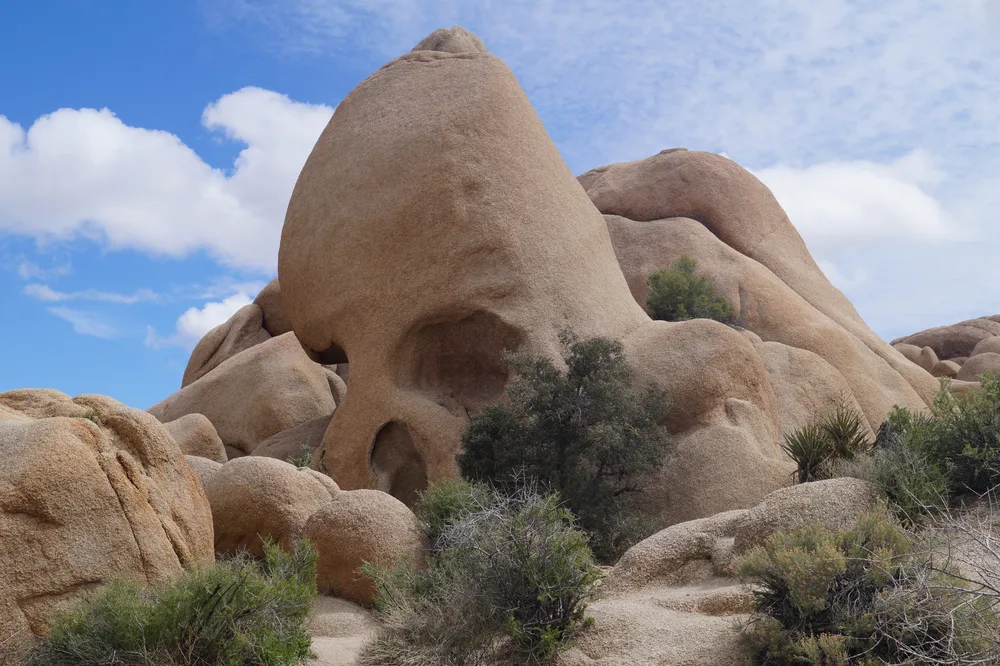
Skull Rock in Joshua Tree National Park, USA:
Location: Joshua Tree National Park, California, United States
Perhaps the most famous Skull Rock in the world, this formation is located in the Mojave Desert within Joshua Tree National Park. It’s a popular stop for park visitors and photographers, and its skull-like appearance is accentuated by the surrounding desert landscape.
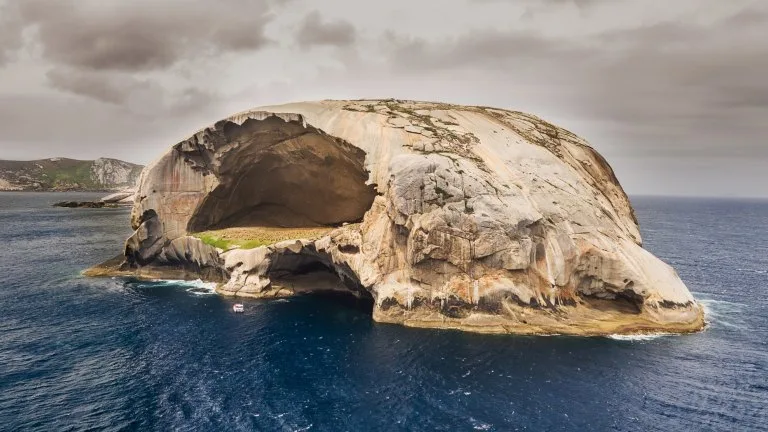
Skull Rock in Australia:
Location: Various locations throughout Australia
Australia boasts several Skull Rock formations, particularly in remote and arid regions. These formations vary in size and shape and add to the country’s unique geological diversity.
Skull Rock in Isle of Skye, Scotland:
Location: Talisker Bay, Isle of Skye, Scotland
The Isle of Skye in Scotland is known for its dramatic landscapes, including a rock formation in Talisker Bay that bears a resemblance to a skull. This feature is set against the backdrop of rugged cliffs and the sea.
Skull Rock in India:
Location: Yelagiri Hills, Tamil Nadu, India
Yelagiri Hills in Tamil Nadu, India, is home to a Skull Rock formation that has become a local attraction. It offers visitors a unique rock formation with skull-like features set amidst the lush greenery of the hills.
Skull Rock in Thailand:
Location: Phi Phi Islands, Thailand
The Phi Phi Islands in Thailand are famous for their stunning coastal scenery, and one of the rock formations in the region is often referred to as Skull Rock. It stands out against the clear waters of the Andaman Sea.
Skull Rock in Namibia:
Location: Spitzkoppe, Namibia
Spitzkoppe is a prominent granite peak in Namibia’s desert landscape, and it features a rock formation with skull-like characteristics. This area is popular among hikers and photographers for its unique geology.
These Skull Rock locations have become popular tourist attractions and points of interest due to their captivating resemblance to human skulls and the intriguing geological processes that shaped them. Visitors from around the world are drawn to these formations, which often serve as both natural wonders and symbols of the Earth’s geological diversity.
Tourism and Recreation

Tourism and recreation play significant roles in the areas where famous Skull Rock formations are located. These unique geological wonders often attract visitors seeking to explore and appreciate the natural beauty of these regions. Here’s how tourism and recreation are associated with Skull Rock locations:
- Tourism Attractions: Skull Rock formations are often promoted as tourist attractions, drawing visitors from near and far who are eager to witness the intriguing geological features. These attractions contribute to local and regional tourism industries, boosting the economies of the surrounding areas.
- Photography and Sightseeing: Many tourists visit Skull Rock formations primarily for photography and sightseeing opportunities. The distinctive appearance of these formations against their natural landscapes makes them excellent subjects for photographers, and visitors often take the opportunity to capture these unique geological wonders.
- Outdoor Activities: In addition to sightseeing and photography, outdoor enthusiasts may engage in various activities around Skull Rock locations. Hiking, rock climbing, and nature walks are common pursuits in these areas, allowing visitors to explore the surrounding terrain and enjoy physical recreation.
- Educational Opportunities: Some visitors come to Skull Rock locations for educational purposes, seeking to learn about geological processes and the forces that shaped these formations. Interpretive signs, guided tours, and visitor centers often provide educational resources and information about the geology and history of these sites.
- Cultural and Historical Interest: In certain regions, Skull Rock formations may have cultural or historical significance beyond their geological appeal. Visitors interested in the cultural heritage of these areas may explore local traditions, legends, or indigenous beliefs associated with these formations.
- Conservation and Preservation: Tourism can also bring attention to the importance of preserving natural landmarks like Skull Rocks. Local conservation efforts may be supported by the revenue generated from tourism, helping to protect the surrounding ecosystems and geological features.
- Local Economy: The influx of tourists can have a positive economic impact on the communities near Skull Rock locations. Visitors typically spend money on accommodations, dining, souvenirs, and other local goods and services, providing a source of income for businesses in the area.
- Promotion and Marketing: Local governments and tourism boards often actively promote Skull Rock formations as part of their marketing strategies to attract tourists. This marketing can include brochures, websites, social media campaigns, and partnerships with travel agencies.
- Recreation and Relaxation: Some visitors come to Skull Rock locations simply to relax and unwind in a natural setting. The tranquil surroundings, unique geological features, and connection with nature provide a peaceful retreat for those seeking a break from their daily routines.
In summary, tourism and recreation are closely intertwined with famous Skull Rock formations. These geological wonders not only serve as visual marvels but also contribute to the local economy, provide educational opportunities, and offer a range of recreational activities for visitors to enjoy and appreciate the natural beauty of these regions.
Summary of Key Points
- Skull Rock formations are naturally occurring rock or rock formations that resemble human skulls when viewed from certain angles.
- They are a result of geological processes such as erosion and weathering acting on rock structures over extended periods.
- Erosion and weathering are the primary geological processes responsible for shaping Skull Rock formations.
- Differential erosion and various environmental factors contribute to their distinctive appearance.
- They often exhibit unusual and striking appearances that stand out in their natural surroundings.
- Human pareidolia, the tendency to see familiar shapes in random patterns, contributes to their recognition as skulls.
- Notable Skull Rock formations can be found in various parts of the world, including Joshua Tree National Park (USA), Australia, Madagascar, Scotland, India, Thailand, and Namibia.
In essence, Skull Rock formations are captivating geological wonders that have been shaped by natural processes, attracting tourists and outdoor enthusiasts to appreciate their unique and striking appearances while contributing to the local economies and conservation efforts of their respective regions.


























